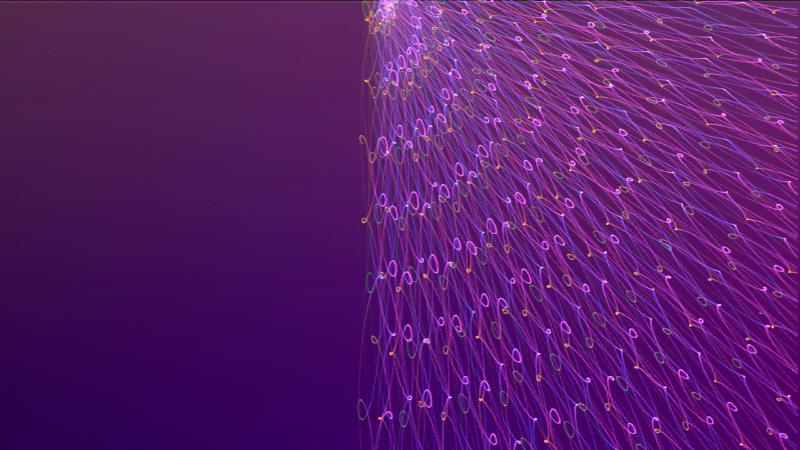Joost Rekveld’s latest work begins with a narrated prologue set over footage of a pen plotter graphing various equations. The pen smoothly glides over the paper as he reads excerpts of Yoshisuke Ueda’s writings explaining what it was like to work with analog computers during his research during the Cold War. This process eventually led to his his discovery of the Chaos Theory, which wasn’t initially taken very seriously. However it became more and more relevant as time went on.
Once the graph is complete, the paper is replaced, the shot is re-framed, and a click starts the process again.
At first, the patterns in the plotted graphs are obvious, but over time they become more elaborate, more chaotic. The patterns still emerge, but their shapes become increasingly complex. Towards the end, the relaxed atmosphere that’s been created is interrupted by the plotter making sudden, almost violent, strokes. The motor briefly releases a sharp whine, the pen flies across the paper leaving a faded mark, and then it continues drawing. It happens more and more frequently, the sound gets stuck in your head.

For the rest of the work, the pen and paper are replaced with electronic signals. Rekveld utilizes antiquated technology, analog computers and oscilloscopes, mostly created for and used in a military context. One piece of equipment specifically had a sticker indicating it was used in the Los Alamos laboratory. The research done during this time period was done to create atomic weaponry, in the pursuit of power and control. The developments made during this time led to more and more global surveillance, and a desire to establish methods of retaliation. Yet, during all of this work being done to increase combative forms of control, the discovery of Chaos Theory showed systems that were uncontrollable. It’s this contrast that Rekveld aims to explore with this work.
The patterns on screen are sound-tracked by sound bytes from sci-fi media from the 60’s. Much of this served as propaganda, fear mongering about potential threats, and aiming to justify the need to have surveillance technology to locate and neutralize these possible attacks. Field recordings of various environments are layered to create rich soundscapes. A NASA countdown sequence, a busy office, a person walking on grass, everything being carefully pieced together to create a narrative.
Patterns in the signals being displayed fade in and out, they morph over time, the colors shift. What may seem like a wall of light at first may start to resemble raindrops in a body of water, a spiraling mesh of bubbles, or fluttering wings. An orb of light in the center starts to emit rays of light that eventually fill the screen, all with the understanding that these lines represent signals generated by an antiquated military computer executing mathematical calculations.
There’s a back and forth dialogue happening on screen.
Rekveld has described in interviews how hands-on this process was.
He likens his experiments with these devices to a modular synthesizer,
turning knobs and patching cables and seeing how that changes the signal.
This is part of a broader ongoing project titled “Dialogue with Machines” he’s been working on since 2017,
and it’s clear that this dialogue has been very productive.
When I watched this, I didn’t completely understand what I was experiencing. I found it captivating, but some aspects of it went a bit over my head, while others were difficult for me to describe. This is a film I’ve had to digest for some time and get some more context on to get an understanding of it. My appreciation has only increased in the week or so I’ve spent thinking about it, and this experience will stick with me.
Towards the end of the film, there’s no more dialogue from the sound bytes, and only atmospheric sound is heard. The loud whirring of the motor from the beginning of the film begins to fade back in, it’s intensity once again interrupting the calmness of the scene. I can still hear it now.
